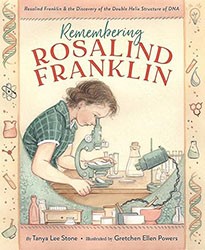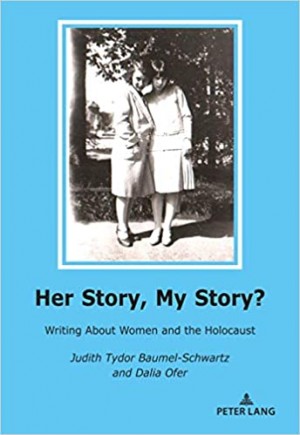Today, unlike in the past, there are many picture-book biographies of notable female scientists and mathematicians. By now, some of these pioneers are widely given the recognition they have long deserved. However, it is especially encouraging to find books about those who are still overlooked.
The central premise of Emmy Noether is that Noether should be a household name, but, unfortunately, she remains relatively obscure. Helaine Becker and Kari Rust have taken on the challenging task of explaining Noether’s complex contributions to mathematics and physics by discussing both the importance of her work and the prejudices that she confronted during her career as a Jewish woman.
As a young child and as the scientist she becomes, Emmy stands out for her colorful personality. She breaks rules at home and in society while she strives to understand the laws of physics in her professional life. Becker conveys how Emmy’s social environment presents one obstacle after another to female genius; she even provides a checklist of unreasonable expectations. Emmy is unlikely to “cook and sew,” “be pretty, gentle and quiet,” or conceal her innate intellectual gifts. Rust portrays Emmy as an endearing and recognizable girl geek, impatient with household tasks and piano lessons. From the look of absorption behind her large eyeglasses as she stirs a pot on the stove, it is clear that her mind is elsewhere.
Noether grows up and begins her formal studies, but men take every opportunity to prevent her success. Rust’s pictures depicting this are funny, intense, and imaginative. When Noether is granted permission to sit in on lectures at the university without officially enrolling, we see her surrounded by bored male students in dark suits. She is illuminated by a white dress and enveloped in a cloud of bright light as she focuses furiously and takes reams of notes. When she is finally allowed to earn a degree, Noether is so enthralled by her research that, after being denied a teaching position, she works without a salary. Young readers who may not be able to imagine such a dark time will find the facts of Noether’s life eye-opening.
Simplifying scientific and mathematical concepts is challenging; there is sometimes a disparity between the book’s tone of exciting adventure in Noether’s life and the task of making her discoveries comprehensible to readers. The eureka moment of understanding Einstein’s theory of relativity while observing the trajectory of a bowling ball is colorful and exciting. Boiling down the idea itself is slower and less accessible: “For example, a bowling ball can’t magically be created out of nothing, and neither can energy. Nor can energy be destroyed. It can move from here to there or even change form, but the original amount always exists somewhere.” While readers may be better able to visualize Noether’s life than grasp her ideas, the book does convey the beauty of her quest to conceptualize the laws that govern the universe.
Becker gives full attention to the role of antisemitism in determining Noether’s professional direction. Noether is always viewed as an outsider because of her Jewish identity, and the Nazis’ rise to power threatens her life and forces her to flee to the United States, where “she [is] welcomed with open arms” at Bryn Mawr College. Rust’s picture of Nazi “Brown Shirts” as menacing figures encircling Noether in an ominous shadow while she stands alone is a powerful image.
The rest of Noether’s regrettably short life and career (she died at the age of fifty-three), is marked by appreciation, particularly from her women students. Instead of the privileged and unmotivated men at her German university, she teaches young women who are as excited as she is by learning. In an illustration, Noether faces a trio of students listening assiduously; one, a woman of color, raises her hand high. This image leaves a strong impact on readers about Noether’s impressive achievements, both as a mathematician and as an example of women’s intellectual creativity and empowerment.
Emmy Noether: The Most Important Mathematician You’ve Never Heard of is highly recommended. It includes a detailed author’s note with additional information and a list of suggested resources.
Emily Schneider writes about literature, feminism, and culture for Tablet, The Forward, The Horn Book, and other publications, and writes about children’s books on her blog. She has a Ph.D. in Romance Languages and Literatures.




